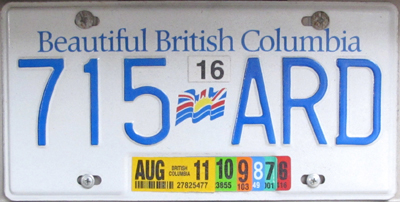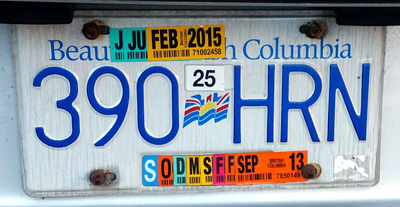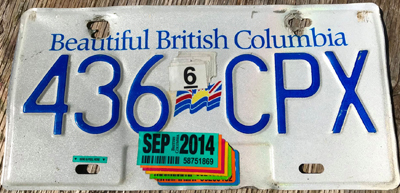|
British Columbia Registration Decals |
||||||||||||||||||||||||||||||||||||||||||||||||||||||||||||||||||||||||||||||||||||||||||||||||||||||||||||||||||||||||||||||||||||||||||||||||||||||||||||||||||||||||||||||||||||||||||||||||||||||||||||||||||||||||||||||||||||||||||||||||||||||||||||||||||||||||||||||||||||||||||||||||||||||||||||||||||||||||||||||||||||||||||||||||||||||||||||||
Quick Links: |
In 1970, British Columbia entered the modern era of license plate renewal with the introduction of a decal to show that a vehicle had been properly registered instead of issuing motorist with a whole new set of plates: |
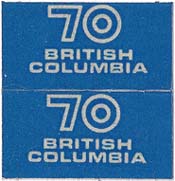 |
 |
 |
 |
The impetus for the change were multiple; the six number 000-000 format then in use would soon be incapable of accommodating the number of vehicles in the province (which was nearing one million), the cost of issuing new plates every year to motorists was becoming expensive, cumbersome and wasteful, and other jurisdictions had already made the transition. |
When British Columbia made this switch in 1970, around half of all US states and Canadian provinces had switched to the use of multi-year base plates renewed by decals. |
While a number of states and provinces had experimented with windshield decals during the Depression and War Years (including BC) as a way to cut costs and save on resources,Ohio is considered to have issued the first true license plate decal in 1943 when it required that motorcycles and trailers be renewed in this way: |
In 1953, Missouri would issue the first registration decals to late registrants and followed this up in 1954 with decals to all motorists. |
Missouri would be followed by California - a state to which British Columbia would often look for inspiration - Nevada, Arizona, Pennsylvania and Washington by 1959. In Canada, the Maritime provinces of New Brunswick and PEI would be the first to use decals: |
Missouri would be followed by California in 1957 (see below) - a state to which British Columbia would often look for inspiration - Nevada, Arizona, Pennsylvania and Washington by 1959. In Canada, the Maritime provinces of Nova Scotia, New Brunswick and PEI would be the first to use decals: |
|
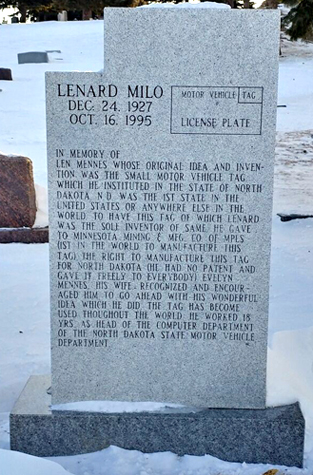 |
In a North Dakota graveyard stands a tombstone for Lenard Mennes who, we are told by his family, worked for 18 years in the state Motor Vehicle Department. Why this is of interest is that the Internet has taken notice of the inscription on the back of the grave (shown at left) which assigns credit to Len for inventing the modern registration decal or, as some states call it "tag": |
|
|
While we here at BCpl8s.ca know little of Len or of his career at the North Dakota MVD we believe the claims on the back of his tombstone are un-corroborated, don't stand up to scrutiny and demonstratively false. |
The concept of a small (metal) renewal tab first surfaced around 1918-19 due to material shortages associated with WWI (long before Len was born) and would be explored again during the early 1940s due to WWII. As outlined above, Ohio introduced the first decal in 1943 when Len would have been 16. Missouri introduced the first true decal in 1953 when Len would have been 26 and a full decade before North Dakota introduced its first plastic registration decal in 1963: |
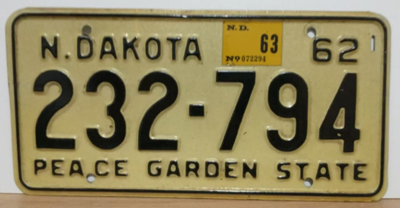 |
Shown at top-left is a 1956 California license plates that was been renewed through the use of an adhesive registration decal (which the first year California used decals), while the plate at top-right is a 1962 North Dakota license plate that has been renewed, for the first time, through the application of a 1963 registration decal. At left is the first reflective metal renewal tab issued by Minnesota in 1957.
|
Now, it may be possible that Len was working at the North Dakota DMV when the decision to switch to decals was made for the 1963 registration year, and maybe he even had a hand in leading this project for the state, but in no way did North Dakota innovate the idea of a registration decal and gift this to the world. |
There is something sad about these claims being made on Mennes' tombstone .... |
* * * * * |
British Columbia had also gained direct exposure to the benefit of decals on license plates in the early 1960s after it joined the "Western Compact" that applied to cross-jurisdictional trucking operations. Participation in this reciprocity agreement required BC to issue decals for truckers to display indicating they were authorised to operate in the province despite having out of province license plates: |
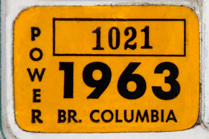 |
|
Shown at left is an example of a "Bingo" plate that was displayed on trucks authorised to operate in BC under the "Western Compact" through the use of a yearly registration decal.
|
In 1965, the Plate Shop at Oakalla mistakenly produced a couple of thousand commercial truck plates with a pre-stamped spot for a renewal decal at the bottom-centre of the plate: |
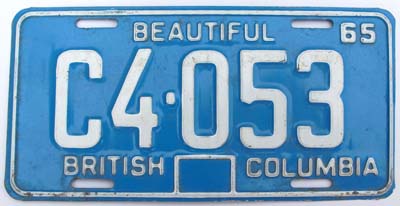 It is thought that these plates were made in anticipation of a multi-year plate being introduced by the province to be renewed through the use of a plastic registration decal. Correspondence between Oakalla and the Yukon Registrar of Motor Vehicles from this time indicates that the Plate Shop had "purchased material that has proven to be satisfactory for periods of up to four years" and could be used with a renewal decal - "as is being employed in many of the provinces and states today". The cost of these decals was estimated at $0.07 (which included packaging in a small cellophane envelope). It is thought that these plates were made in anticipation of a multi-year plate being introduced by the province to be renewed through the use of a plastic registration decal. Correspondence between Oakalla and the Yukon Registrar of Motor Vehicles from this time indicates that the Plate Shop had "purchased material that has proven to be satisfactory for periods of up to four years" and could be used with a renewal decal - "as is being employed in many of the provinces and states today". The cost of these decals was estimated at $0.07 (which included packaging in a small cellophane envelope). |
It is unclear why it would take another 5 years to introduce decaled renewals, but when BC did it was the fourth province to do so after New Brunswick, Nova Scotia and PEI. |

* * * * * |
Continuing with past practices, motorists could begin to renew in the vehicles in the first
week of January, but were given a grace period of two months
before the previous year’s plates expired. Accordingly,
all 1969 license plates had to be off the road by the end of February. |
For the rest of the 1970s, all registration decals would expire on February 28th (or the 29th in 1972 and 1976 due to the Leap Year). |
An interesting aspect of the 1970 decal is
that it did not contain a registration number
to identify it with the plate. This was done on purpose as new license plates had also been introduced in 1970 and would aid in the identification of motorists who had not properly renewed. The purpose of the decals was simply educational; to give motorists a practice opportunity to become familiar with the application of decals on plates. |
| 1970 - 1972 | ||
 |
 |
 |
Only
one year into this experimental plate run, the 1971 decal
was chosen as the best means in which to celebrate the centennial
of Confederation with Canada on B.C. a plate. Bearing the
centennial logo, the decal also possessed the first registration
numbers to prevent theft by tying a decal with a specific
vehicle. |
 Strip of Unissued 1971 Decals |
With the successful conclusion of this
first decal experiment, the province undertook a new phase in 1973, one
that was to last five years. As it was another general re-issue,
no decals were produced for 1973: |
| 1974 - 1978 | ||||
 |
 |
|
 |
 |
1974
marked a new change in the appearance of decals. The New Democratic
Party (NDP) had been elected the year before on a platform
that included the promise to introduce a compulsory government
insurance scheme. One of the steps implemented in the creation
of the Insurance Corporation of British Columbia (ICBC) was
a simplification of the licensing system. |
Starting March 1,
1974, all cars and trucks would be issued decals as many of
the vehicles that had previously carried commercial plates
were switched to passenger. In conjunction with this move,
validation decals expiring February 28, 1975 appeared bearing
the words "PASS" (denoting passenger), and "COMM" (commercial).
For 1976 and 1977
decals would also be adorned with an image of a dogwood; the
provincial flower. |
 Strip of Unissued 1976 Decals |
| Defective Decals - 1978 |
In late 1977, a problem developed with the decals that were to be issued to motorists in early January of 1978. In one version of the story relayed to BCpl8s.ca, the decals had been designed to become brittle after having been exposed to cold temperature as a security measure to prevent them being stolen and reused on other vehicles.
|
In delivering these decals to BC, the manufacturer flew them out in an unheated plane, resulting in the security feature being activated in the high elevation the plane traveled at and the decals being un-issuable upon arrival at the Motor Vehicle Branch office in Victoria. Needless to say, this caused a mad-panic and replacement decals had to be rush produced - which we think partly explains the very simple design of the 1978 decals.
|
Another version of the story that appeared in local newspaper at the time is presented below:
|
* * * * * |
In 1979, the province introduced what it hailed to be a "lifetime" license plate, one that would be used for decades to come. Accordingly, and as happened in 1973, there would be no validation decals issued for 1979 as all motorists required new plates and these could be used to determine if a motorists registration was current. With these new license plates, the province sought to break a long tradition of end-of-the-year-rushes in February for renewals by introducing staggered registration. Applying to all those owning a new car for the first time after April 1, 1979, or purchasing a vehicle requiring license plates, a decal would be issued that would remain valid for twelve months, or until the last day of the month preceding issuance. As the majority of driver’s registration expired on February 28, 1980, they would only receive a 1981 decal, making a 1980 dated plate relatively rare. |
| 1980 - 1988: Various Styles | ||
 |
 |
 |
 |
 |
 |
 |
 |
 |
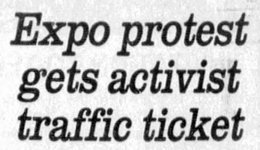 |
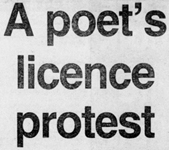 |
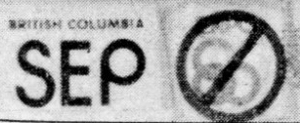 |
| In early 1986, some motorists protested their cars being used as advertising billboards for Expo 86 by defacing the Fair's logo which the province had incorporated into the design of the 1986 registration decals. One motorist went so far as to have a decal of a red circle with a line through it produced to make it easier for motorists wanting to protest Expo on their plates. If caught, a driver risked being fined $35 ($85 in 2023). The legacy of these protestors actions was a decision by the province to not include the Winter Games logo or colouring on the 2010 registration decals. | ||
* * * * * |
In
1989, the province adopted a standardized style for decals with the colour scheme rotating through four different colours; green-red-blue-black that would be used for the next 11 years: |
| 1989 - 1999: Thick Border | |||
|
 |
 |
 |
 |
 |
 |
 |
 |
 |
 |
|
| 1993: Introduction of Day Decals |
 In
1993 the Lower Mainland was introduced to AirCare; a testing
system designed to keep high smog producers off the road (and
thereby improve air quality standards). In
1993 the Lower Mainland was introduced to AirCare; a testing
system designed to keep high smog producers off the road (and
thereby improve air quality standards). |
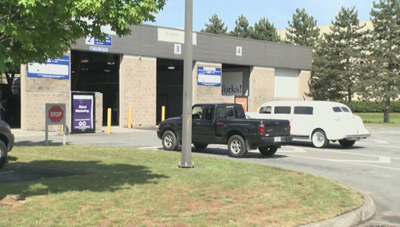 |
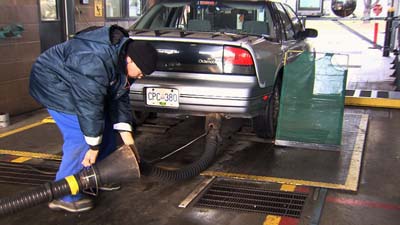 |
Motorists could not
obtain their validation decals until they received a clean
bill of health from an AirCare center. Even though staggered
registration had been introduced thirteen years earlier, February
still remained the busiest month for renewals and in typical
fashion most drivers waited until the last possible day of
the month before seeking AirCare certification. |
To ease these
end-of-the-month rushes, staggered registration at a daily
level was introduced. It is now a mandatory feature on all
B.C. plates that a date decal be displayed even though AirCare was phased out on December 31, 2014: |
|
 |
 |
 |
 |
 |
 |
 |
 |
 |
 |
 |
 |
 |
 |
 |
 |
 |
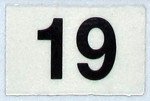 |
 |
 |
 |
 |
 |
 |
 |
 |
 |
 |
 |
 |
|||||
It is believed that vehicles with registration expiring after July 1, 1993, were required to display the Day Decal, however there are known examples were plates expiring before this date display Day Decals, and plates expiring after July 1, 1993, not displaying Day Decals: |
| Day Decal Variations |
Another weird quirk with the day decals is that they are occasionally issued with a smaller font, making them more difficult to see at a distance: |
|
 |
 |
 |
 |
 |
 |
It is also possible to find examples of '6' and '9' (or is it '9' and '6') without the bar underneath them to assist with ensuring they are placed the proper way up on a plate: |
 |
| 1996: Rampant Counterfeiting! |
As can be seen in the gallery above, the standardised design and four colour rotation adopted by the province in 1989 became rather predictable and, by 1996, reductions in the cost of home "bubble jet" printers and other technological advances made forging the black-on-white 1996 decals very easy. |
In response, the province was forced to move to a new colour for the last two months of the year in order to thwart the black market trade in counterfeit decals: |
 |
 |
 |
| 1998 Defective Decals |
A
little known problem occurred with the 1998 decals whereby
the production process resulted in the "Type I"
decals becoming brittle and prone to splitting along the line
stamped into the peel tabs found on the back of the decal. |
To address the problem, a new series of decals were ordered and these are identifiable by the larger, narrower serial numbers: |
 Type I |
 Type II |
| 1999 Thin Borders |
As a cost cutting measure to reduce the amount of ink being used to print the registration decals, ICBC introduced "thin" border starting in August of 1999: |
 |
 |
| 1999 - 2003: Thin Border | |||
 |
 |
 |
 |
| 2004: No Border |
As a further cost cutting measure to reduce the amount of ink being used to print the registration decals, ICBC eliminated borders altogether for 2004: |
 |
| 2005 - 2008: No Border (short) | |||
|
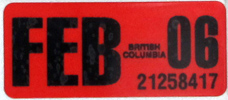 |
 |
 |
A common site in the years after 2004 were plates with the yellow "wings" of the 2004 decals shooting out from either side of more recent smaller decals, an effect which brings to mind the infamous "Voice of Fire": |
 |
 |
While most motorists were not bothered by this, others were (we assume for aesthetic reasons). The result were a number of plates where an attempt had been made to peel off the 2004 decal: |
 |
* * * * * |
Starting in
2009, the province implemented a similar four colour rotation as had been last used between 1989 and 1999, except the new colours would be orange-green-yellow-pink. Gone was blue due to complaints from law enforcement regarding legibility, while a number of minor changes were made to the decals over the years (detailed below). |
| 2009 - 2023 | |||
 |
 |
 |
 |
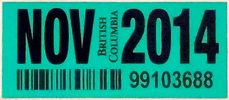 |
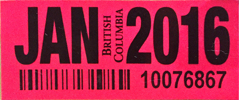 |
||
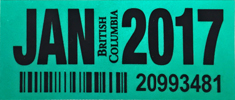 |
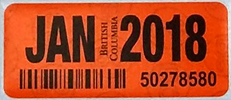 |
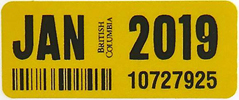 |
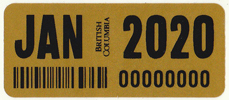 |
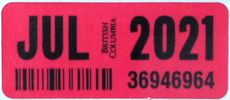 |
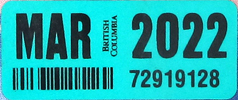 |
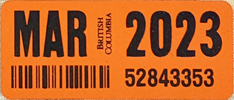 |
|
| Olympic Gold, on your license plate! |
In the lead up to the 2010 Winter Olympics in Vancouver, ICBC had discussed a proposal to use a gold colour on the 2010 decals (as well as the Olympic logo). The idea being that motorists could show their support for the games. This was ultimately abandoned due to concerns that people opposed to the Winter Games would not be happy having to promote the Games on their licence plates. While it less clear why the gold colouring was not used, given its reappearance in 2011, a digital specimen of what the decal would have looked has survived and is shown below: |
 |
| Dual Decal Boxes |
In
addition, with the introduction of the two most recent plate
types, being the Olympic and Consular in 2007, new embossed
decal boxes are being provided which clearly indicate where
each type of decal is now to be stuck: |
.jpg) Olympic Base (2007) |
.jpg) Consular Base (2007) |
.jpg) Commercial Truck Base (limited issuance - 2008 / re-appeared in 2013) |
.jpg) Prorate Base (limited issuance - 2010 / 2011) |
 Passenger Base (2013) |
ICBC provides all motorists with handy instructions on where to place their decals |
| How to Protect From Decal Theft |
In or around 2012, the Surrey RCMP put out a help brochure on how to protect against decal theft. As can be seen in their image below, this included avoiding decal piles, scratching off old decals and slicing your new decal so it can't be removed easily: |
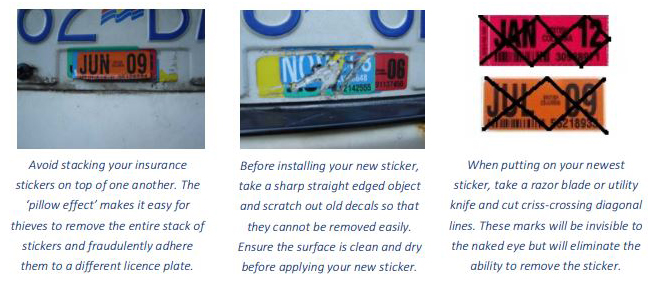 |
 |
|
Needless to say, it can be frustrating coming across one of these decals when you are considering adding a plate to your collection, but at least their was a rationale to their wanton destruction. |
| Fun Facts: Decals (circa 2012) |
|
| Day vs Year Confusion! | |
Due to an apparent confusion amongst some motorists who mistakenly believed that the last two numbers of the registration decal denoted the day of the month their registration expired as opposed to the year, ICBC made a change to rectify this by including the full year on the decals. In doing so, however, the reference to "BRITISH COLUMBIA" had to be rotated 90 degrees counter-clockwise in order to still fit on the decals. |
|
| Redesign (2017) |
In February of 2016, ICBC released a Bulletin advising of changes to the design of its decals starting in July of 2016 (which will be for decals with a July 2017 expiry). What prompted the change appears to be a desire to have the underlying hologram be more visible, but the Corporation also used the opportunity to bring back the rounded corners seen between 1999-2009, to reduce the size of the fonts and to introduce a slightly different shade of green. Why? Well, when we know more we will let you know. For posterity, we have archived the Bulletin and to access it just Click Here!
|
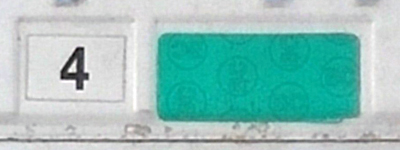 |
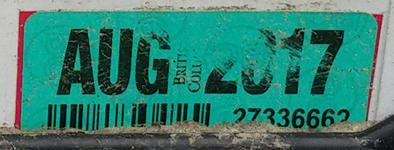 |
Apparently this problem is not as prevalent as the sheeting peeling off plates with "approximately 100 incidents of fading decals [having] been brought to ICBC's attention out of more than 2 million active number plate insurance decals currently on B.C. vehicles." |
"Fading" is certainly one way to describe the problem, but we here at BCpl8s.ca think "disappearing" ink to be a more accurate description as the first instance of this we saw was a decal that had lost about 95% of its ink - leaving only a green rectangle. |
Moreover, once we began to look for these decals, they were not too hard to find (but not easy to photograph), making us query the number of vehicles that might actually be affected (more likely in the thousands, if not tens of thousands). |
We here at BCpl8s.ca even conducted a controlled experiment with the decal on one of our fleet vehicles at the end of 2017 (after the decal had expired) to see how easily the ink would come off. The video below shows what happened: |
For posterity, we have archived a copy of the Bulletin No. 17. Our Gallery of faded decals can be accessed: Here! |
The problems with the 2017 decals prompted ICBC to recall and replace all the decals for July to December of 2017 with a third type (what we are going to call "Type 3") of decal design: |
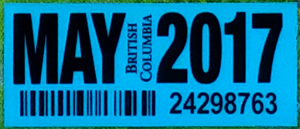 Type 1 - January to June |
The problems with the 2017 decals also occurred with the 2018 decals, prompting ICBC to similarly recall and replace all 2018 decals: |
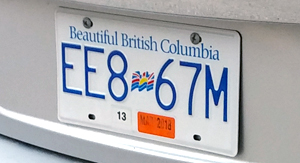 |
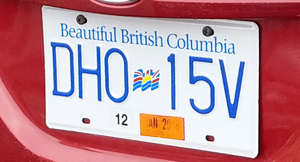 |
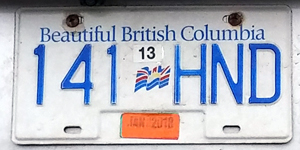 |
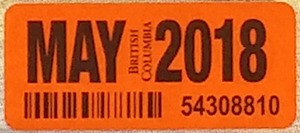 Type 1 - January to June (Defective) |
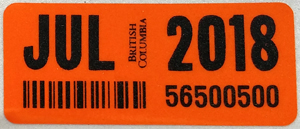 Type 2 - January to December (Replacement) |

We are told by ICBC that the colours are actually different and, to be fair they are, as 2019 had a yellow base and 2020 is sporting a "gold" base, but ... |
The whole purpose of decals is to present a visual cue to law enforcement and others that a motorist has duly paid their registration and insurance for the year and is authorised to be operating a motor vehicle on public roads. Ensuring, therefore, that decals are easy to identify and, more importantly, significantly different than the previous year in order to catch cheats is important. |
Consider that the Corporation no longer issues red decals (since 2006) or blue decals (since 2008) due to complaints by law enforcement about visibility and you get a sense of how important colour selection is. |
In fact, BC has the lowest un-insured motorist rate in North America at somewhere in the neighbourhood of 3% (possibly even 1%), which ICBC attributes in large part to its decal requirements. In comparison, in most US states it is around 10%, and California is closer to 30%. |
Against this criteria, the use of very similar colours in back-to-back years while not a harbinger of end times, is certainly embarrassing and will likely raise the hackles of law enforcement officials. |
| The coming obsolescence of decals |
On July 15, 2020, Bill 20 - Motor Vehicle Amendment Act (No. 2), 2020, was debated in the Committee of the Whole House of the provincial legislature. In the words of Attorney General, David Eby, the purpose of the amendments were as follows. |
They provide for the possibility for decals to last for periods longer than the term of the vehicle licence plate and are non-expiring — you get your sticker, and it doesn’t expire — and also for the possibility of there not being a decal at all. |
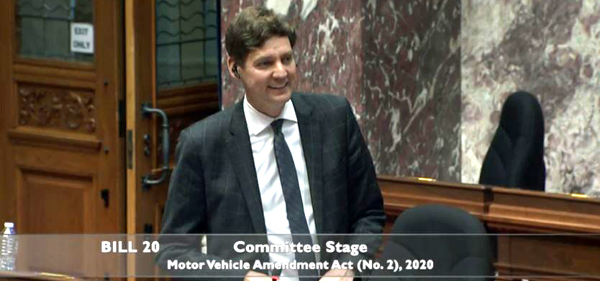 |
While Eby took great pains to explain to the Committee that the amendments were simply "enabling" and would provide future flexibility if the government wanted to get creative with license plate renewals and that there were no immediate plans to phase out decals, the long-term objective was clear. |
Referring to the challenges that had been created by attempting to provide service during the on-going provincial health emergency related to COVID-19, Eby noted that it may be "better not have a decal at all ... [and that] there are many jurisdictions that don't have decals like [BC]". |
This desire to now do away with decals reflects the challenge of delivering the decals to motorists who are completing their vehicle registrations and renewals either online or by phone. |
Eby further acknowledged that with the proliferation of Automatic License Plate Recognition (ALPR) cameras and technology that it is possible deals have outlived their usefulness to law enforcement and that police now rely on "their licence plate readers and database, and they don't look at the decals at all." |
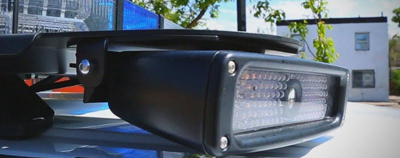 |
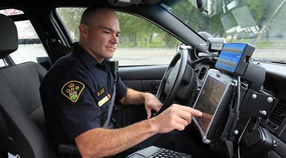 |
BC would not be the first province to do away decals, and while Quebec was a very early adopter in 1992, the pace of provinces and territories eliminating the need for decals as technology advances has been quickening since 2012: |
|
|
|
|
|
|
There is a common theme amongst provinces announcing the elimination of decals; it is cost savings. In Saskatchewan it was annual savings of $100,000, in Manitoba it was $200,000, while in Alberta it was $1,200,000. |
||
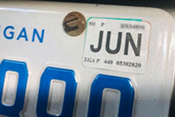 A similar trend has been occurring in the United States, with Michigan also looking at eliminating its registration decal requirement in the fall of 2020. In this state, lawmakers were concerned that police no longer rely on decals to confirm the validity of a vehicle's registration and that possibly 60% of the foot traffic to Secretary of State offices was for renewal tabs. Eliminating decals would create significant savings for the state. A similar trend has been occurring in the United States, with Michigan also looking at eliminating its registration decal requirement in the fall of 2020. In this state, lawmakers were concerned that police no longer rely on decals to confirm the validity of a vehicle's registration and that possibly 60% of the foot traffic to Secretary of State offices was for renewal tabs. Eliminating decals would create significant savings for the state. |
||
The Australia state of New South Wales (NSW) offers an interesting postscript on the elimination of decals. Scraping "car rego stickers" in 2012 (which were displayed on the front windshield) was projected to save the state $575,000 AUS in printing costs and make life easier for drivers. |
||
|
||
The change resulted in a significantly greater windfall for the state as it has begun collecting over $40 million a year in fines from owners driving unregistered vehicles. The penalty for driving an unregistered vehicle in NSW is $686 AUS with approximately 50,000 being cited each year. In BC, the fine for driving an uninsured car is $598 CDN. |
| Postscript |
Bill 20 - Motor Vehicle Amendment Act (No. 2), 2020, received Royal Assent on August 14, 2020, and the new regulations pertaining to decals are now in effect. |
The key changes to the Motor Vehicle Act are seen to be at Sections 12 and 51 and include language that provides flexibility in the issuance of decals. Specifically, ICBC may now, "instead of issuing validation decals, issue a prescribed document or take a prescribed action respecting the validity of a licence." |
Given subsequent announcements from the province regarding the introduction of online registration in May of 2022 (see below), we here at BCpl8s.ca are guessing that 2022 might be the last year that decals are required. |
| What to do about old decals? |
While there is no precise point in the passenger series when decals ceased to be applied, it generally happened in the middle of the "N" block (e.g. between "NA0-00A" and "NX9-99X"). As a result, there were a lot of pre-"N" block plates (and some "N" block plates) that continued to show decals as of mid-2022. |
For many drivers, this was no big deal, and likely to become a status symbol in the coming decades (provided the ink doesn't fade away), but for others, the continued display of a decal was now blasé ... but what to do? |
Well, a number of options are available to such drivers, such as getting new plates without the decals. If, however, you are not keen on forking over money for new plates, removing or obscuring your old decals is the next, best (and frugal) option: |
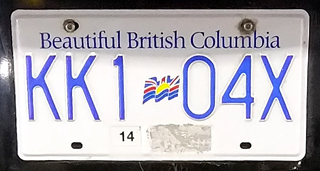 Scraped off! |
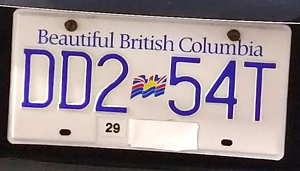 Covered with white tape! |
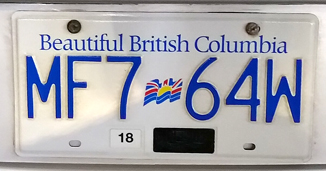 Blacked out with sharpie! |
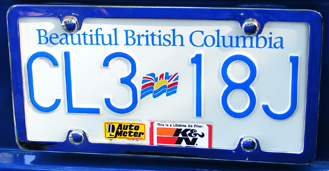 Covered with corporate stickers! |
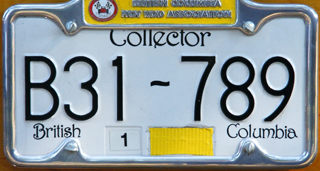 Covered with duct tape! |
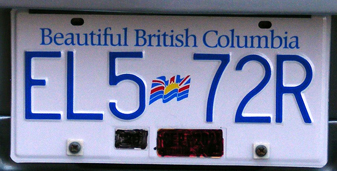 Blacked out with sharpie! |
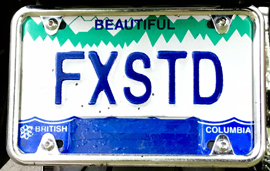 Covered with blue tape! |
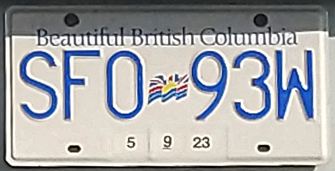 Another homemade reminder? Expires May 9, 2023? |
As can be seen in the examples above, obscuring or removing a decal is not ideal if plate aesthetics is important you. Removing, if not done properly, will damage the plate or leave a layer of crud (use a heat gun or hair dryer and a sharp edge to remove them properly), while obscuring is never going to be precise. |
Of interest to us here at BCpl8s.ca is that many of the examples shown above the day decal has been left intact! What the heck? The month/year decal is bad but the day decal is good? We don't get it ... |
| Postscript |
On June 14, 2022, CHEK News in Victoria reported that the design of BC license plates would be changing as a result of decals being phased out. What those changes would look like was not said. 6 weeks later, on July 27, 2022, the first plates without a debossed decal well at the bottom where spotted: |
.jpg) |
It is understood that the change first appeared on a personalized plate as these are custom orders and that existing stock had to be used before the boxes would be phased out on regular passenger plates. It is not known, yet, what other changes the Corporation is planning, but we are curious if it is going to include expanded fonts for either the serial characters, or the jurisdiction and slogan displayed on the plates. |
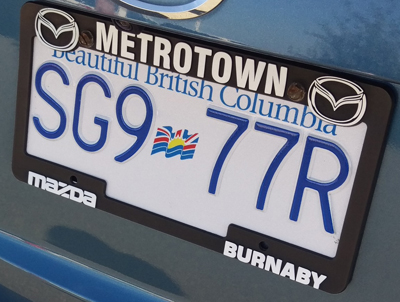 |
On August 18, 2022, the first passenger plate without a decal well was spotted in the Lower Mainland with a serial that started in the "SG" bloc. It was later determined that the end of the decal boxes occurred with plate "SF9-99X". |
.jpg) |
|
| Postscript Part Two |
Apparently, a helpful Autoplan Agent was advising clients that she had four customers in the last 6-months(!) get fined $800 each in Washington State for driving with a lapsed decal and it would be a good idea to remove any they might still have on their plates if they head south of the border regularly. The story, of course, is absurd (what about all the BC plates not displaying any decal?) and was subsequently clarified by ICBC and Washington State police on March 31, 2023, after local media picked up the story:
This is, however, not the first time this type of paranoia has afflicted B.C. motorists who drive into the U.S. on a regular basis following a change to the way registration is displayed on a license plate.
Washington State police were quoted as stating as long as a valid egistration certificate could be produced there would not be any problems. Ray Hadfield, the Superintendent of the Motor Vehicle Branch (MVB), said surrounding states and provinces had been advised on the form of the new plates and couldn't "see why there would be any problem." Hadfield further stated that while he had "heard the rumour, which originated through a Vancouver radio station this week [January 26, 1973], no one has been able to provide him with details of a specific case." Three months later, the Vancouver Sun columnist Jack Wasserman wrote about the story of Louvain Pratt of West Vancouver, who had travelled to Reno:
Regardless, six years later, in 1979, the same mania gripped BC motorists as reports of a Vancouver driver "getting a $25 traffic ticket in Washington State, allegedly for failing to have a decal on his 1979 plate." Yet, just as before, the MVB had notified all the provinces and states across North America of the pending change in December of 1978 that would result in BC license plates not displaying a expiry date. The new Superintendent of the Branch, Reg Whitlock could not understand how this could be issue again, unless the motorist had been fined for not carrying current registration papers - which was an offence in BC as well as Washington State. |
| We Salute You! | ||
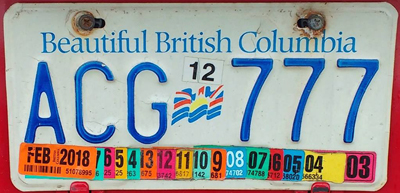 |
||
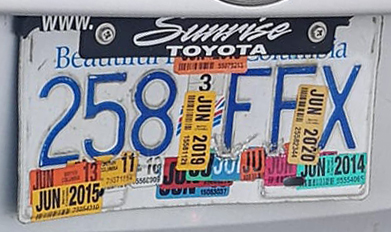 |
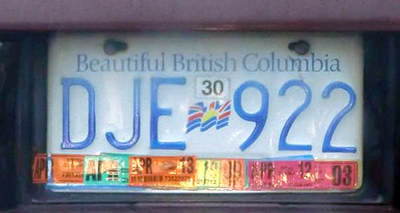 |
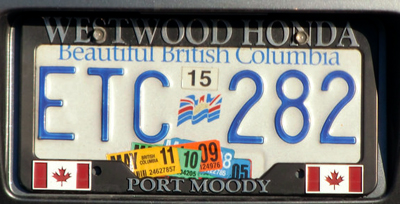 |
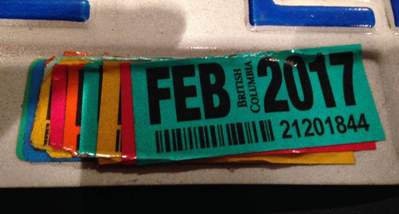 |
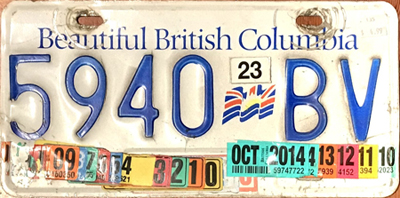 |
|
Quick Links: |
|
© Copyright Christopher John
Garrish. All rights reserved.

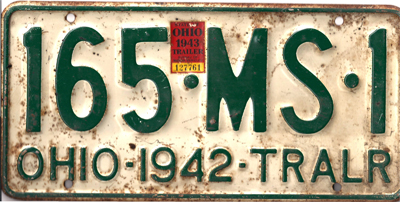
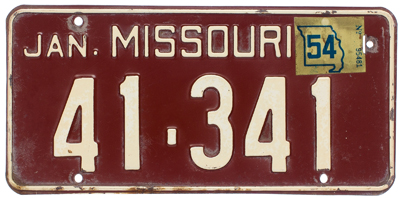
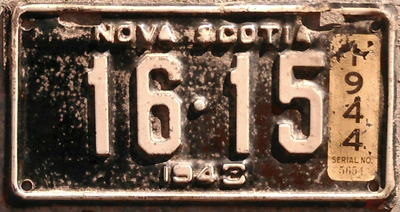
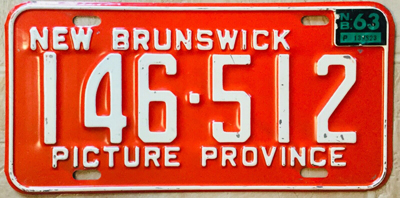
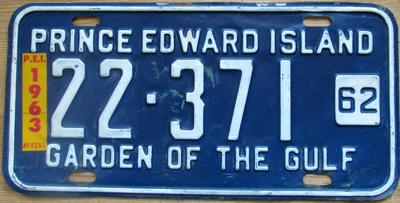
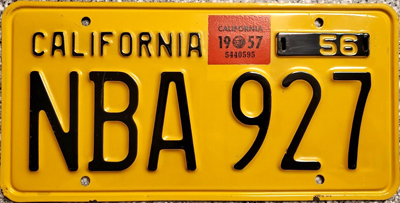
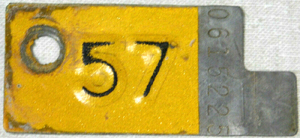
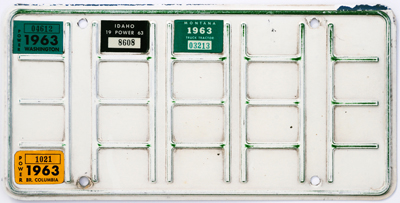

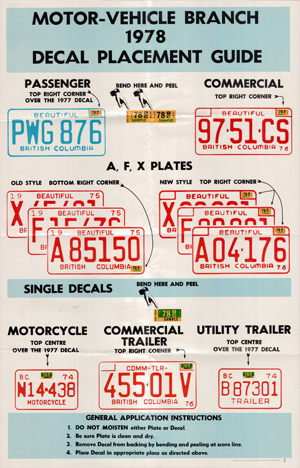


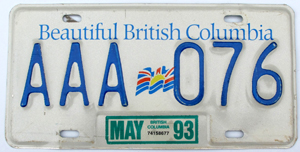
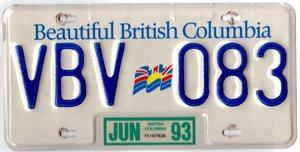
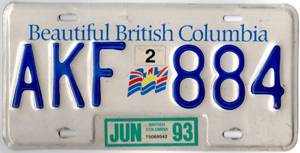
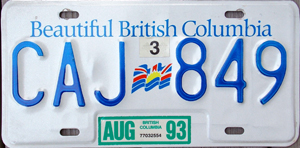
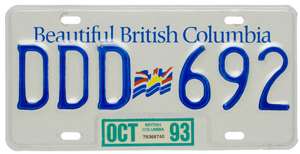
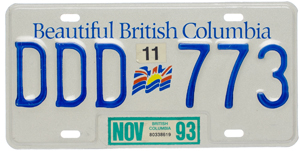



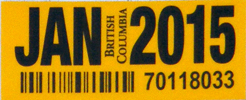
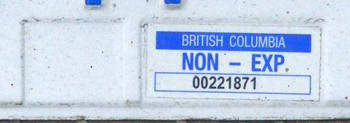
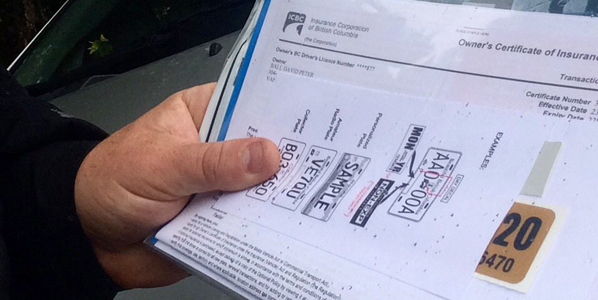

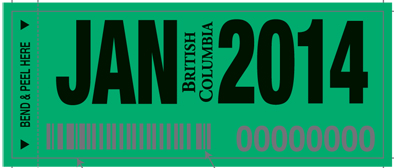

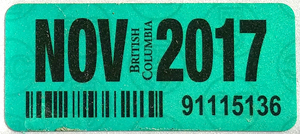
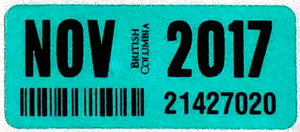
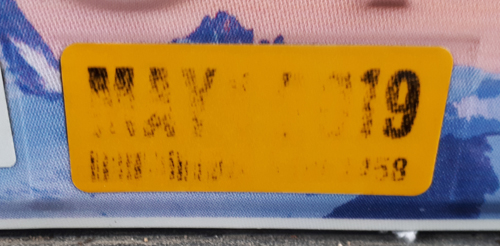
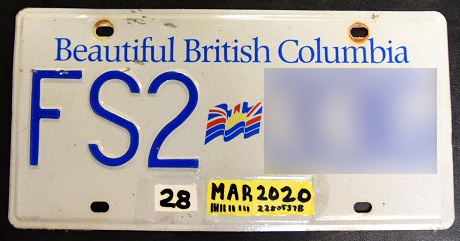
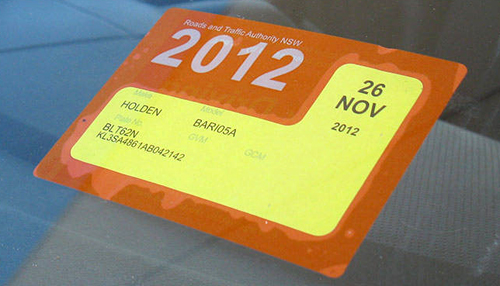
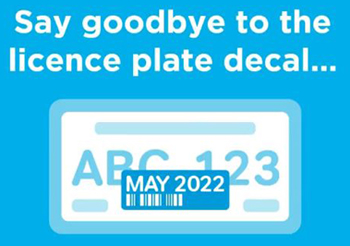 On Feburary 14, 2022, ICBC announced the phasing out of registration decals effective May 1, 2022. With the way registration in the province worked at the time, the last decals to be officially issued would then expire the following year on April 30, 2023 (even though no longer needed).
On Feburary 14, 2022, ICBC announced the phasing out of registration decals effective May 1, 2022. With the way registration in the province worked at the time, the last decals to be officially issued would then expire the following year on April 30, 2023 (even though no longer needed).
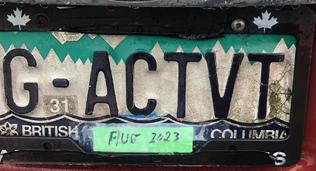
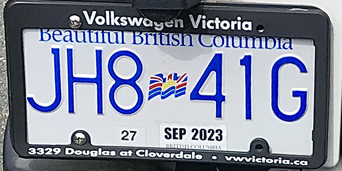
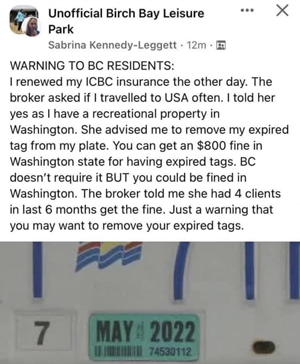 It was bound to happen ... but we are surprised it took so long! On or around March 30, 2023, rumours started spreading on-line (pre-internet these would have been considered an "Urban Legend") about the risks to BC motorists travelling in the U.S. with expired decals on their license plate.
It was bound to happen ... but we are surprised it took so long! On or around March 30, 2023, rumours started spreading on-line (pre-internet these would have been considered an "Urban Legend") about the risks to BC motorists travelling in the U.S. with expired decals on their license plate.
 In 1973, the Victoria Times newspaper reported on concerns about "Bare" B.C. plates and the problems these were creating for motorists with Washington State police (NOTE: BC did not issue decals for 1973).
In 1973, the Victoria Times newspaper reported on concerns about "Bare" B.C. plates and the problems these were creating for motorists with Washington State police (NOTE: BC did not issue decals for 1973).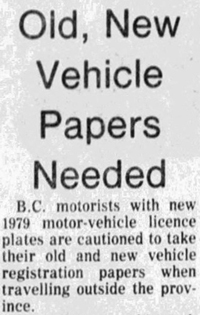 Something about Wasserman's story seems a little too neat, after all, why couldn't Pratt have just provided a copy of her driver's license and some other identification to confirm her identity?
Something about Wasserman's story seems a little too neat, after all, why couldn't Pratt have just provided a copy of her driver's license and some other identification to confirm her identity?